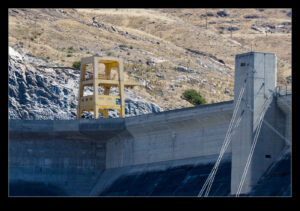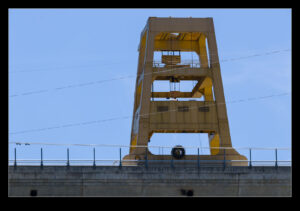 The plants in our backyard attract a lot of insects and we get plenty of bees hanging out on sunny days. One of our hanging baskets gets a reasonable amount of attention but not a lot. However, one bee showed up on a Sunday afternoon and got our attention. First, it stayed on the basket for ages climbing over the same flowers repeatedly unlike the usual bee behavior or constantly moving from flower to flower. The other reason for our attention was the size of the thing. It was huge compared to our average bees. I wonder if it got so large by removing every morsel of nutrient from each flower!
The plants in our backyard attract a lot of insects and we get plenty of bees hanging out on sunny days. One of our hanging baskets gets a reasonable amount of attention but not a lot. However, one bee showed up on a Sunday afternoon and got our attention. First, it stayed on the basket for ages climbing over the same flowers repeatedly unlike the usual bee behavior or constantly moving from flower to flower. The other reason for our attention was the size of the thing. It was huge compared to our average bees. I wonder if it got so large by removing every morsel of nutrient from each flower!
Tag Archives: size
Cruise Ship Comparison
 The cruise ships are back in Seattle. A year of cruise travel didn’t happen while COVID was raging and no vaccinations were available. Now they seem to have found a protocol to make cruises viable. (Not something I would be trying but each to their own.) When we were down in the city for a weekend, we got to the hotel shortly before one of the cruise ships sailed. It belonged to the Norwegian cruise line and was a huge thing. It was not an elegant looking ship but it clearly had plenty of capacity.
The cruise ships are back in Seattle. A year of cruise travel didn’t happen while COVID was raging and no vaccinations were available. Now they seem to have found a protocol to make cruises viable. (Not something I would be trying but each to their own.) When we were down in the city for a weekend, we got to the hotel shortly before one of the cruise ships sailed. It belonged to the Norwegian cruise line and was a huge thing. It was not an elegant looking ship but it clearly had plenty of capacity.
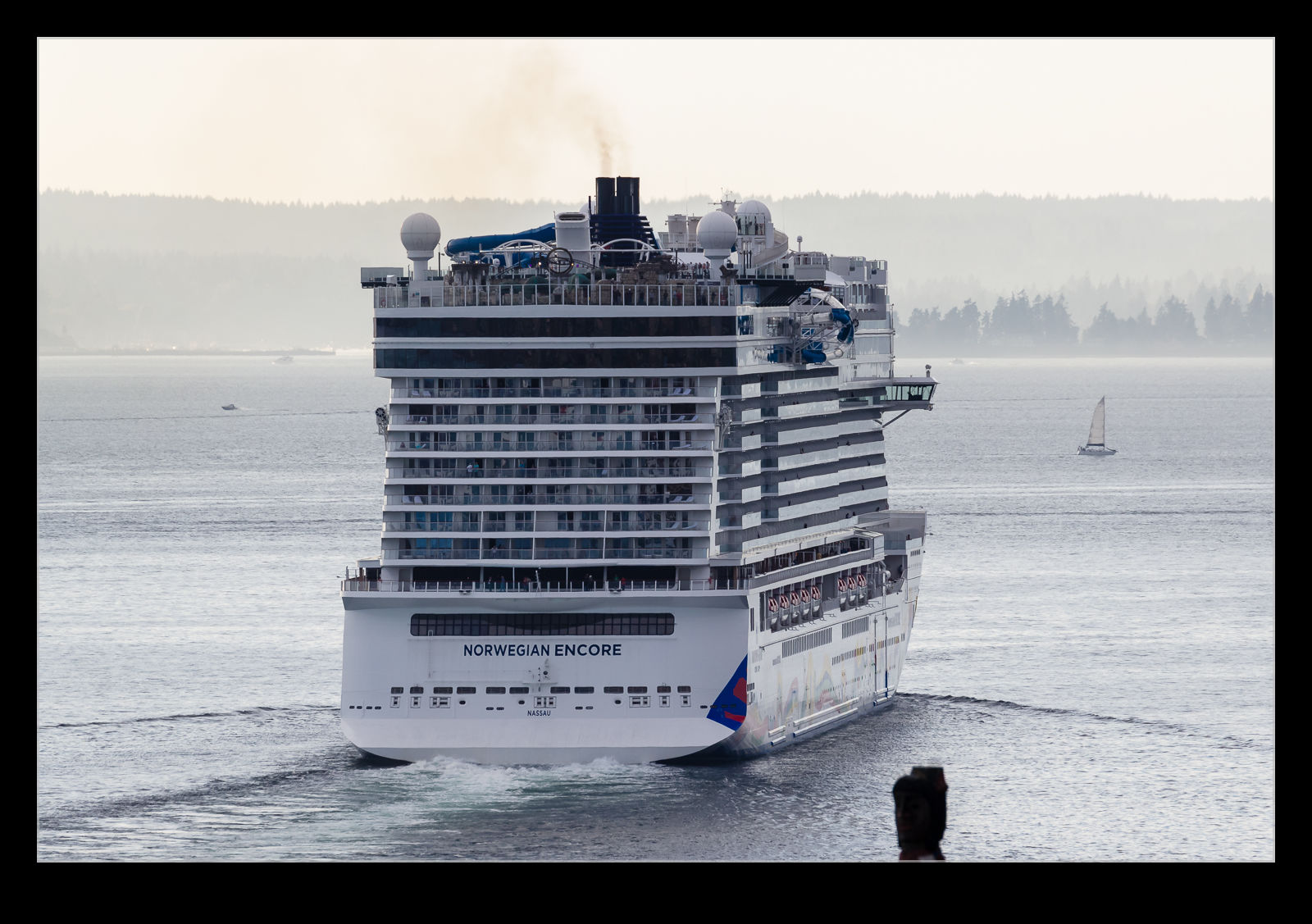 It sailed off on its trip – presumably towards Alaska – and a little while later the other end of the cruise ship spectrum showed up. The National Geographic Venture is not a traditional cruise ship. They have small vessels that are able to make more specialized trips into restricted spaces that the large cruise ships could never get to. We have looked at their cruises to Alaska as something that we might want to do at some point. The season is over for them now so it was not clear what the boat was up to but it couldn’t have looked more different than the Norwegian ship.
It sailed off on its trip – presumably towards Alaska – and a little while later the other end of the cruise ship spectrum showed up. The National Geographic Venture is not a traditional cruise ship. They have small vessels that are able to make more specialized trips into restricted spaces that the large cruise ships could never get to. We have looked at their cruises to Alaska as something that we might want to do at some point. The season is over for them now so it was not clear what the boat was up to but it couldn’t have looked more different than the Norwegian ship.
A220 Engines Look Big Underneath
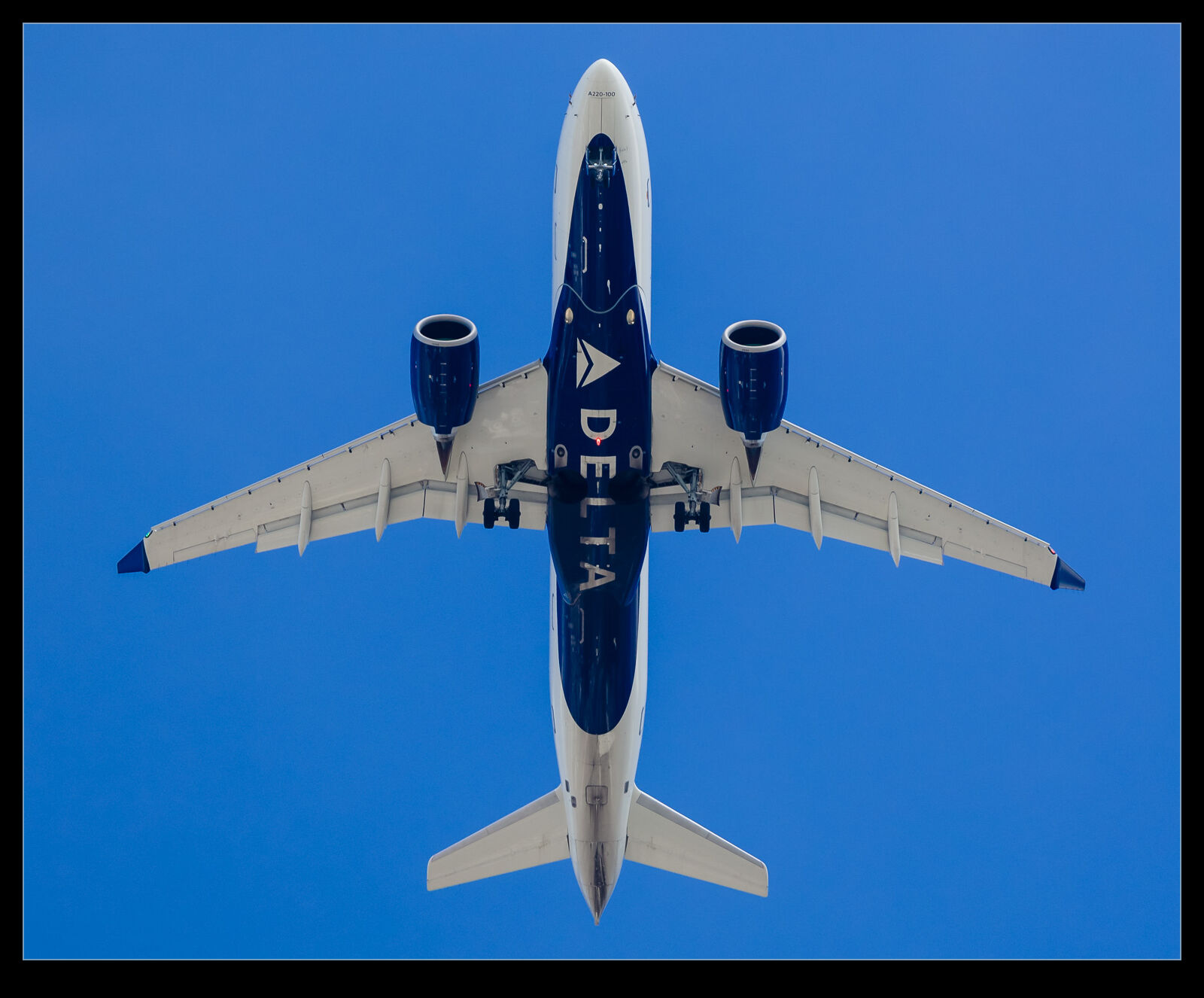 The A220 (or C Series as it was then) was the plane that spooked Airbus and then Boeing. It was an efficient plane with a new engine – the Pratt and Whitney geared turbofan or GTF. Airbus decided the re-engine the A320 family with a version of the same plane and the success of that project changed Boeing’s plans from a new plane to a reboot of the 737 which gave us the Max! They went with a different engine to the GTF (and Airbus decided to offer both). The GTF is a high bypass engine so it takes up a lot of space under the wing. This A220 passed over me on approach to SeaTac and gave a good idea of just how large the engine nacelles are compared to the rest of the plane.
The A220 (or C Series as it was then) was the plane that spooked Airbus and then Boeing. It was an efficient plane with a new engine – the Pratt and Whitney geared turbofan or GTF. Airbus decided the re-engine the A320 family with a version of the same plane and the success of that project changed Boeing’s plans from a new plane to a reboot of the 737 which gave us the Max! They went with a different engine to the GTF (and Airbus decided to offer both). The GTF is a high bypass engine so it takes up a lot of space under the wing. This A220 passed over me on approach to SeaTac and gave a good idea of just how large the engine nacelles are compared to the rest of the plane.
Crane is Larger Than It Looks
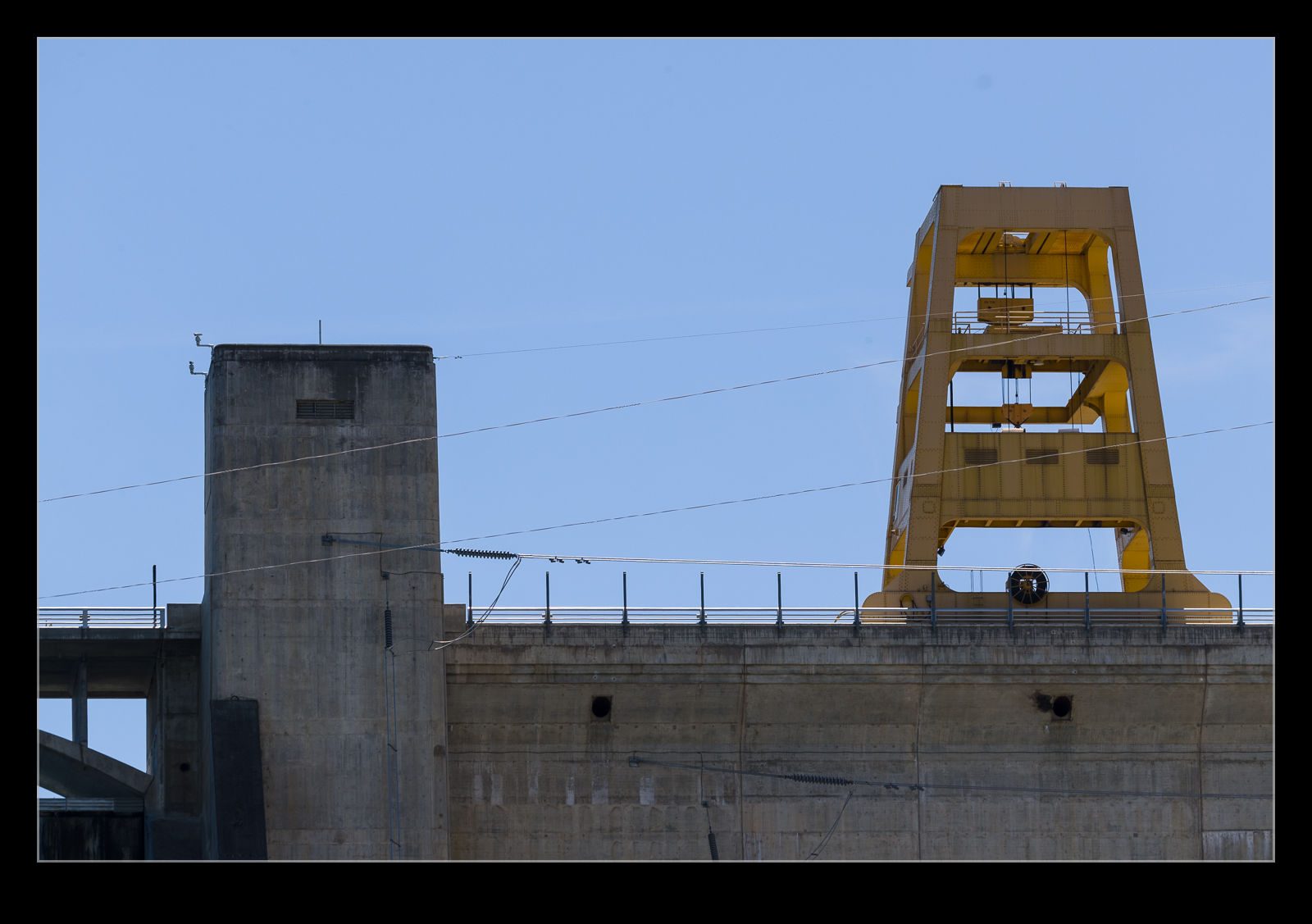 There are a number of cranes that operate around the dam structure at Grand Coulee. With the scale of the dam being so large, it is hard to appreciate how big these cranes are. However, the road crosses the edge of the dam at the top and you go across rails in the road surface along which the cranes can traverse. This gives you some idea of just how large it really is. It would have been good to see one in action to give some idea of what it was lifting but that was not to be. Below is a wider view of the dam so you can see how small the crane looks in the grand scheme of things – disguising its true size.
There are a number of cranes that operate around the dam structure at Grand Coulee. With the scale of the dam being so large, it is hard to appreciate how big these cranes are. However, the road crosses the edge of the dam at the top and you go across rails in the road surface along which the cranes can traverse. This gives you some idea of just how large it really is. It would have been good to see one in action to give some idea of what it was lifting but that was not to be. Below is a wider view of the dam so you can see how small the crane looks in the grand scheme of things – disguising its true size.
High ISO Raw File Size
On my previous camera bodies I had occasionally shot at very high ISO settings as a result of the lack of light. I had not paid a huge amount of attention to any secondary effects of doing so. My current cameras had a work out in some very low light when I decided to test them in some rather unfriendly conditions. When I was at home, I was running some disc backups and I found I could not get the normal number of files onto a single disc. A quick bit of investigation and I could see why. The high ISO shots had a significant increase in file size. As I understand it, RAW files, while containing all of the data from the sensor, do have an amount of compression applied. I imagine that the noise inherent in high ISO shots means that the compression is less effective as there is so much variation across pixels. As an example, a shot at ISO 320 will average at about 22Mb. The shots at ISO 51,200 are coming in at over 30Mb. At ISO 204,000, the files can hit 40Mb. That is quite an increase! Something to keep in mind when planning to shoot in very low light conditions.
How Many Megapixels?
How many is too many? I really don’t know. I refer to the number of pixels that can be squeezed onto the sensor for a digital camera and what is desirable or not. Over the years the camera manufacturers have steadily increased the number of pixels on their sensors and come up with ever greater resolutions as a result. This has been both beneficial and problematic. What I am not sure about is whether I am missing the point with all of this.
My first DSLR was a Canon EOS 10D. It was a 6.3Mp camera – something that would now be considered unacceptable on a cell phone. It was a great camera, even if it did have a number of limitations that would be considered unheard of today. However, for its day it was very good. I had full page images printed in magazines from it with absolutely no problem.
As the megapixel wars got going, I was adopting larger and larger file sizes by default. I would tell anyone who asked that megapixels were not the most important thing when buying a camera and there were plenty of other issues to consider. I certainly don’t mind having a more dense file when I need to crop in to a shot but the impact on memory cards, the need for ever larger hard drives and the upgrades to computers to process the larger files were downsides that I didn’t appreciate.
For a while it seemed like the pixel count had leveled off a bit and the focus was on gaining better noise performance at high ISO settings. This seemed like a very worthwhile approach for me. However, big sensors are now back in play with the Nikon D800 leading the way and Canon talking about some large sensor cameras to come. (I think it is worth noting that, since the pixel count is a function of the square of the linear resolution, these larger counts do not translate in to a huge improvement in linear resolution. Yes, you do get more detail but it isn’t quite as mind-blowing as some will suggest.)
Am I a dope for not welcoming this? Am I taking a Luddite approach in sounding happy with what I had and not appreciating the advances? Do I just accept that all of my gear has to be upgraded periodically to stay in line with the latest thing whether it is camera file sizes, the processing requirements of new generation software or the interface needs of the latest devices. I’m sure there are some benefits to having such dense files but I am not sure that they matter for what I do.
As for the uses for large file sizes, there is always much discussion about printing big or using for billboards. Only a photo nerd looks at a picture from six inches and billboard resolutions are actually quite poor. I wonder what a good resolution level really is. Anyone care to suggest the perfect compromise?
Cabs are Shrinking
 When we arrived in Chicago nearly ten years ago, the cab fleet was almost totally homogenous. If you got in one, it was almost definitely going to be a Crown Vic. Over the years, a few Prius (should that be Prii) started to show up. Now the a Crown Vics are becoming a minority as newer vehicles that are predominantly hybrid take over the fleet. Having slightly smaller vehicles makes a lot of sense given that there are often few occupants. However, as I walked home the other day, I passed the lone of taxis outside the IBM building and the car at the front of the line caught my eye. A Ford Fiesta! Now that really is a shrink!
When we arrived in Chicago nearly ten years ago, the cab fleet was almost totally homogenous. If you got in one, it was almost definitely going to be a Crown Vic. Over the years, a few Prius (should that be Prii) started to show up. Now the a Crown Vics are becoming a minority as newer vehicles that are predominantly hybrid take over the fleet. Having slightly smaller vehicles makes a lot of sense given that there are often few occupants. However, as I walked home the other day, I passed the lone of taxis outside the IBM building and the car at the front of the line caught my eye. A Ford Fiesta! Now that really is a shrink!
These Things Are Tiny!
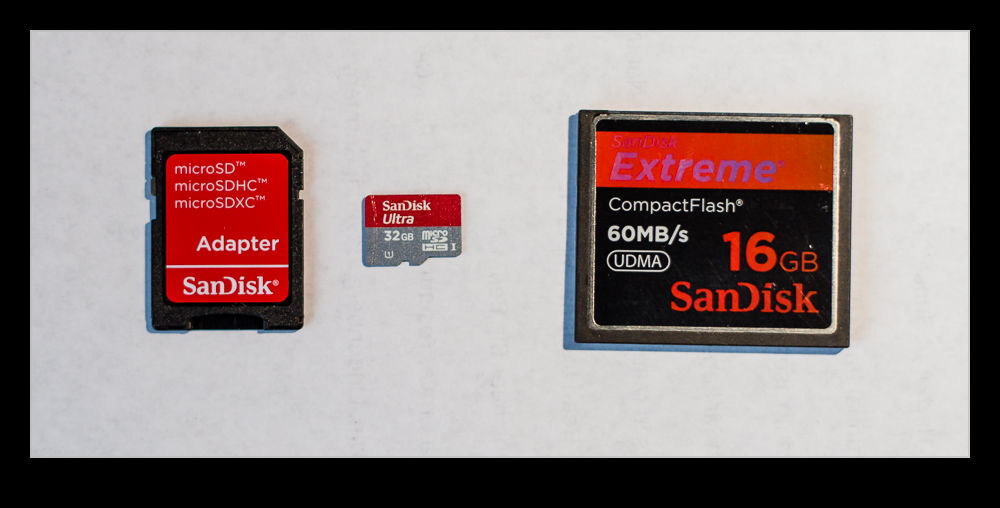 I shouldn’t be so old that I find some of the technological developments amazing but every once in a while you see something that impresses you. I have been shooting with cameras that use compact flash cards for a long time now. The form factor hasn’t changed in all of that time. The SD card was seen as the way ahead but somehow the Compact Flash has always remained ahead of it. The XQD card now seems to be the next step but we will save that for another day.
I shouldn’t be so old that I find some of the technological developments amazing but every once in a while you see something that impresses you. I have been shooting with cameras that use compact flash cards for a long time now. The form factor hasn’t changed in all of that time. The SD card was seen as the way ahead but somehow the Compact Flash has always remained ahead of it. The XQD card now seems to be the next step but we will save that for another day.
My cameras have a compact flash and an SD slot. I have SD cards in them as backups if I suddenly need a little extra capacity but they aren’t used much. The Compact Flash has always been faster to write to. I do use them in my GoPro. Recently B&H had a special on cards and, since I am about to buy a new GoPro and it uses the micro SD card, I took the opportunity to pick one up cheaply. These things are small.
In the above picture you see a Compact Flash (16GB) and the adapter for the micro SD to fit in a standard SD slot. Then you see the micro SD in the middle. It is a 32GB card. Am I the only one who thinks that thing is tiny?



